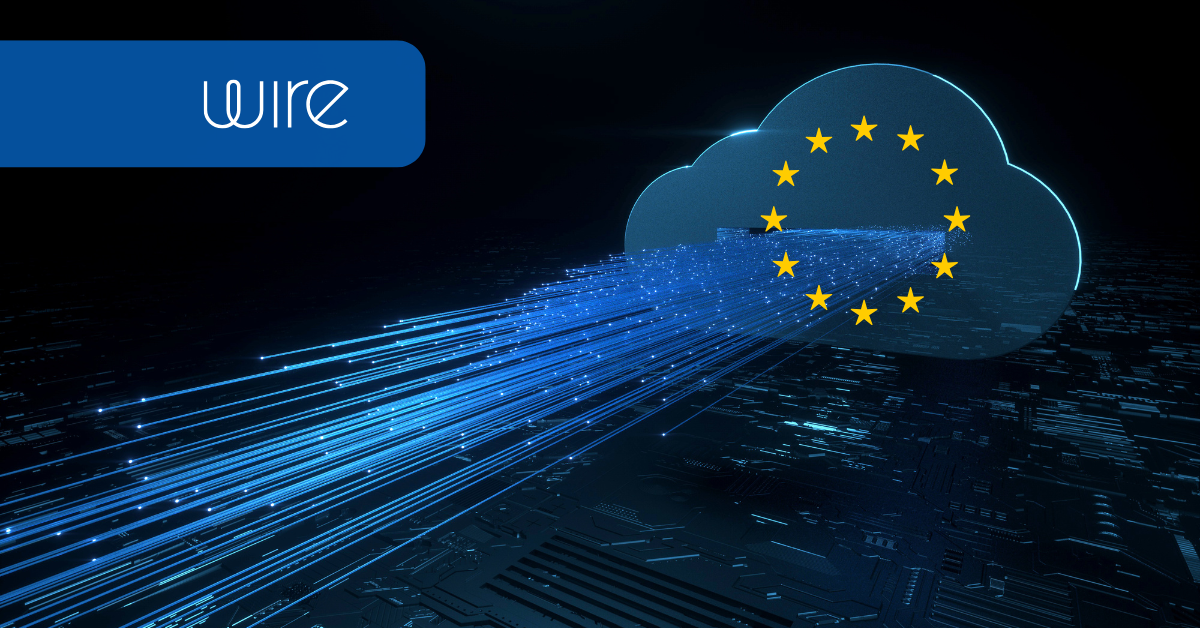Europe’s reliance on proprietary tech giants like Microsoft, Google, and Amazon for critical software and data services presents a growing concern to European enterprise leaders. Decision-makers are increasingly asking a practical question: Can we still rely on U.S. technology for Europe’s most sensitive data and collaboration?
Search demand for “European alternatives” has surged over the past year (+660% YoY to be exact), reflecting a wider movement among enterprises and public institutions to regain control of their digital infrastructure. The catalysts are clear: the enforcement of NIS2 and DORA, rising scrutiny of the EU - U.S. Data Privacy Framework, and even operational disruptions like the recent AWS outage that left European users offline for hours.
Download The Enterprise Guide to EU Alternatives
Dependency carries hidden costs
European enterprises remain heavily dependent on U.S. cloud and collaboration providers, from Microsoft 365 to AWS and Google. But that dependency comes with layers of risk that are now impossible to ignore.

- Compliance conflicts
The U.S. CLOUD Act and FISA 702 give American authorities the right to access data from U.S.-based companies, even when that data resides on European servers. This creates an unavoidable tension with GDPR, NIS2, and DORA, which require strict control over how personal and operational data is accessed and processed.
- Reputational risk
Each breach or policy violation undermines public trust. The Dutch Parliament recently warned that the country’s digital infrastructure is “dangerously dependent on American providers” and called for a “Plan B” to reduce exposure. For organizations handling sensitive data, from healthcare to defense, the reputational cost of relying on non-EU systems can outweigh convenience.
- Vendor lock-in
Long-term contracts, proprietary APIs, and costly migration processes trap organizations inside ecosystems they can’t easily leave. As seen in the Wire EU Sovereignty Survey, 63% of European IT and compliance leaders say they would switch to EU tools if migration were simpler.
- Operational fragility
When hyperscale platforms fail, the effects ripple through entire sectors. A single AWS outage in 2025 disrupted banking, logistics, and public services across Europe, a stark reminder that resilience cannot depend on a single foreign provider.

Why alternatives are a competitive advantage
Choosing European alternatives isn’t a compromise anymore, it’s a competitive edge.
Organizations that move early toward sovereign and open-source technologies are not rejecting innovation; they are leading it. The Austrian Armed Forces migrated to LibreOffice to protect data sovereignty. Schwarz Gruppe, one of Europe’s largest retail groups, runs its digital operations through StackIT, part of a broader movement of European enterprises adopting sovereign platforms like Wire to reduce exposure to non-EU jurisdictions. Or the Danish government that is phasing out Microsoft Teams for public institutions.
Their decision reflects a shift from viewing sovereignty as political to recognizing it as essential for secure, sustainable operations. They understand that true innovation depends on autonomy, interoperability, and verifiable security.
The hybrid reality: It’s not all or nothing
The path to sovereignty doesn’t require a full exodus from existing platforms. Most organizations today are adopting hybrid models, blending EU-based tools into existing workflows instead of replacing everything overnight.
As Hanna Bozakov from Tuta put it in a recent Wire Uncut conversation, “Change can come in small steps. Start by using a new provider for your most sensitive communication, then gradually migrate more workflows into a secure environment or live in a hybrid way.”
That perspective reflects how many enterprises make progress: through pragmatic experimentation rather than disruption. Andy Piper from Mastodon echoed the same point: “We forget that the tools we’re comfortable with now once felt unfamiliar too. Growth means discomfort first.”
For many organizations, that growth starts with integrating sovereign communication platforms like Wire for confidential collaboration, while keeping mainstream suites such as Microsoft 365 for general productivity. Others adopt multi-cloud setups, combining EU-based infrastructure with selected U.S. platforms under strict data-segmentation controls.
This step-by-step approach helps balance compliance, usability, and business continuity, making sovereignty achievable without forcing abrupt change.
The economic and strategic imperative
Digital sovereignty isn’t just a compliance trend but an economic strategy. According to Forrester, Europe needs to invest €800 billion annually to stay competitive in digital productivity. Keeping that value within Europe requires building, and using, European technology.
Initiatives like EuroStack, backed by the Bertelsmann Stiftung and leading economists, estimate that achieving a sovereign European tech stack will require €300 billion by 2035, spanning semiconductors, cloud, AI, and communication infrastructure.
This investment shows long-term competitiveness and security. Sovereign clouds, open-source software, and EU-native communication tools help retain intellectual property, reduce external dependency, and foster innovation rooted in European values: privacy, transparency, and accountability.
What enterprises should do next
- Audit dependencies
Map out where critical data and communications flow through non-EU providers. Identify exposure points under U.S. jurisdiction.
- Integrate alternatives
Start with high-risk layers: secure collaboration, cloud hosting, and storage. Adopt EU-based tools such as Wire, Nextcloud, or StackIT that meet GDPR, NIS2, and DORA standards.
- Build resilience
Implement hybrid and multi-cloud models. Include sovereignty clauses in RFPs and procurement policies to ensure future flexibility.
Sovereignty as strategy
Digital sovereignty means preparedness.
The organizations that act now are not cutting themselves off from the world; they are securing their place in it.
By choosing European-built and EU-hosted alternatives, enterprises future-proof against compliance disputes, political instability, and the next major outage. Sovereignty isn’t a burden; it’s a business advantage, one that defines the next decade of European innovation.
Explore the full findings in The Enterprise Guide to EU Alternatives by Wire.
